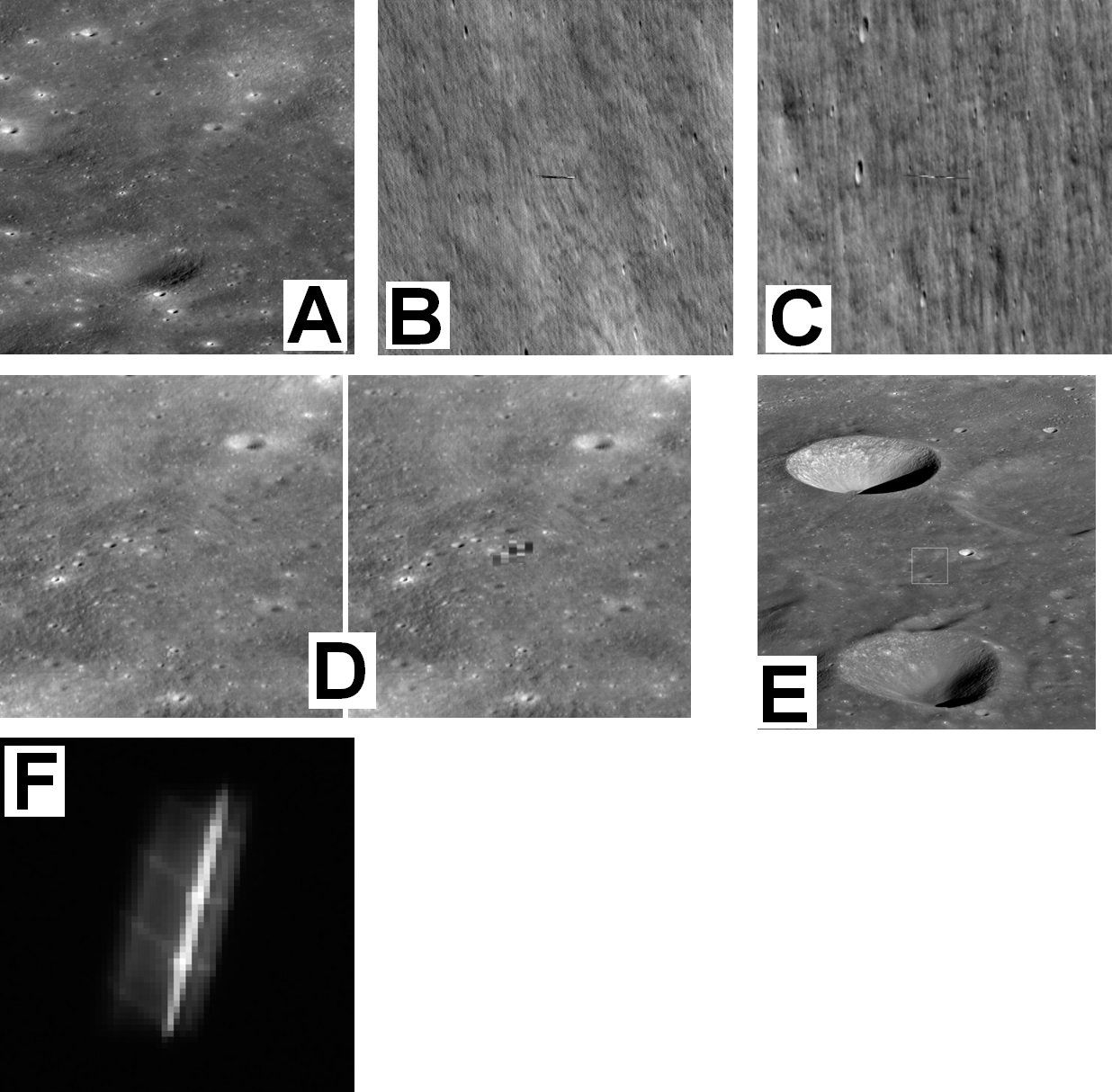In a celestial meet-cute, NASA’s Lunar Reconnaissance Orbiter (LRO) captured a series of images of South Korea’s Danuri lunar orbiter last month.
The two spacecraft, orbiting the Moon in nearly parallel paths, zipped past each other at high speeds, offering a fleeting opportunity for LRO to snap some unique photos.
Chasing Danuri: A Balancing Act of Speed and Precision
While LRO has been diligently studying the Moon for over 15 years, capturing glimpses of another spacecraft presented a new challenge. The relative velocities between the two orbiters were immense, clocking in at around 7,200 miles per hour (1,500 kilometers per hour). This meant that the LRO operations team at NASA’s Goddard Space Flight Center had to be incredibly precise in maneuvering the Lunar Orbiter Camera (LROC) to catch a glimpse of Danuri.
The short exposure time of just 0.338 milliseconds wasn’t enough to capture a perfectly clear image of Danuri. Due to the high relative speeds, Danuri appears smeared across the frame, stretched to 10 times its actual size in the opposite direction of travel.
Three Encounters, Three Snapshots
LRO managed to capture Danuri on three separate occasions during its close encounters. Here’s a breakdown of each encounter:
- First Encounter: LRO was tilted 43 degrees downward from its usual lunar surface-observing position to capture Danuri streaking across the middle of the frame from a distance of 3 miles (5 kilometers).
- Second Encounter: During this encounter, LRO was even closer to Danuri, at about 2.5 miles (4 kilometers). The spacecraft was oriented 25 degrees towards Danuri to capture the image.
- Third Encounter: For the final photo, LRO was reoriented by 60 degrees to catch Danuri when it was 5 miles (8 kilometers) below it. This image pair required some post-processing magic. The image geometry was corrected, and the Danuri pixels were unsmeared and stretched on the right side of the image to highlight the Korean spacecraft. The entire image was then rotated 90 degrees to provide a more natural viewing perspective.

A Tale of Two Spacecraft: Lunar Collaboration
While LRO captured snapshots of Danuri last month, the roles were reversed in April 2023. Danuri’s ShadowCam instrument, provided by NASA, snapped a photo of LRO as the Korean spacecraft passed about 11 miles (18 kilometers) above it. This exchange of photos highlights the growing international cooperation in lunar exploration. Both LRO and Danuri are valuable assets in furthering our understanding of Earth’s natural satellite.
LRO: A Legacy of Lunar Exploration
Launched in 2009, LRO has been a tireless explorer of the Moon.
With its seven powerful instruments, it has collected a vast amount of data, including high-resolution images, compositional readings, and temperature measurements. This data has contributed significantly to our knowledge of lunar geology, resources, and environment.
LRO’s findings have been instrumental in identifying potential landing sites for future missions and understanding the potential presence of water ice in permanently shadowed craters. The data is crucial for planning future human and robotic missions to the Moon, ensuring safe landings and the identification of resources that could be utilized by astronauts.
As NASA, along with commercial and international partners, gears up for Artemis missions, LRO’s data will play a vital role in ensuring the success and safety of these endeavors. The successful capture of Danuri is a testament to LRO’s continued operational excellence and its contribution to the ever-expanding story of lunar exploration.
Beyond the Capture: A Moon Rich in Collaboration
The LRO-Danuri encounter signifies a new chapter in lunar exploration – one marked by international collaboration. This collaboration extends beyond the exchange of photos. ShadowCam, the instrument on Danuri that captured LRO in 2023, was provided by NASA. This kind of collaboration allows countries to leverage each other’s expertise and resources, accelerating our understanding of the Moon.
As more and more countries set their sights on the Moon, such cooperative efforts will be essential for unlocking the Moon’s secrets and unlocking its potential benefits for humanity. Sharing data and expertise will pave the way for a sustainable and prosperous future of lunar exploration, benefiting all humankind.
The Moon holds the potential for scientific discovery, resource utilization, and even space tourism. International collaboration ensures that these endeavors are conducted peacefully, ethically, and with the collective benefit of humanity in mind.
The LRO-Danuri encounter serves as a beacon of hope, demonstrating the unifying power of space exploration and the potential for international cooperation to unlock the mysteries of our lunar neighbor.



















